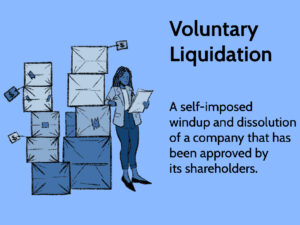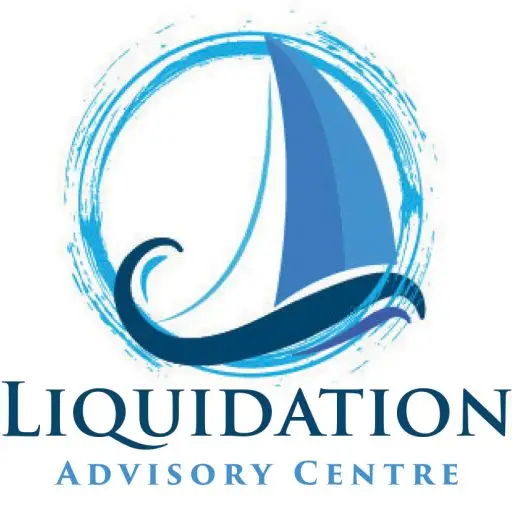Members’ Voluntary Liquidation in Australia: Your Options as a Company Director
 In this article, we will explore Members’ Voluntary Liquidation in Australia and the options available to company directors when considering this voluntary winding-up process for the company. Understanding the intricacies of liquidation is essential for company directors who wish to dissolve a solvent company and distribute its assets among shareholders.
In this article, we will explore Members’ Voluntary Liquidation in Australia and the options available to company directors when considering this voluntary winding-up process for the company. Understanding the intricacies of liquidation is essential for company directors who wish to dissolve a solvent company and distribute its assets among shareholders.
With over 30 years of company liquidation experience, the team at the Liquidation Advisory Centre can help you navigate the complexities of voluntary liquidation, ensuring compliance and the best outcome for all parties involved.
Members’ Voluntary Liquidation (MVL) Overview
Voluntary liquidation is a formal process through which a solvent company is voluntarily wound up and its assets sold to shareholders or stakeholders. Unlike other forms of liquidation that typically involve insolvency and creditor repayment, Voluntary Liquidation is initiated by the company directors or shareholders when they decide to cease operations and distribute the company’s assets.
When Might a Members’ Voluntary Liquidation Be Appropriate?
A voluntary liquidation is a suitable option under various circumstances, including:
- Completion of Business Objectives: Directors and shareholders may decide to wind up the company once it has achieved its objectives and there is no longer a need for its existence.
- Retirement or Resignation: If company directors or stakeholders plan to retire, resign, or pursue other ventures, Members’ Voluntary Liquidation allows for the orderly closure of the company and the distribution of assets to the departing members.
- Restructuring or Simplification: Companies may opt for members’ voluntary liquidation as part of a corporate restructuring or simplification strategy to streamline their group structure.
- Tax Efficiency: Members’ Voluntary Liquidation can offer tax advantages for shareholders compared to other methods of extracting value from the company, making it an attractive option.
The Voluntary Liquidation Process: Director’s Options
As a company director considering Members’ Voluntary Liquidation, you have several key responsibilities and options to navigate the process successfully:
- Director’s Declaration of Solvency: Before proceeding with a Members’ Voluntary Liquidation, company directors must formally declare solvency. This declaration confirms that the company can pay its debts in full within 12 months of commencing the liquidation process.
- Appointment of a Liquidator: Upon the declaration of solvency, directors must convene a meeting of shareholders to pass a resolution to wind up the company and appoint a liquidator. The liquidator will oversee the distribution of assets.
- Asset Realisation: The appointed liquidator will take control of the company’s assets and work to realise their value. This may involve selling assets, settling outstanding liabilities, and distributing surplus funds to shareholders.
- Distribution to Shareholders: Once all debts, including tax liabilities, are settled, the remaining assets are distributed among shareholders in accordance with their entitlements.
- Final Reporting and Dissolution: The liquidator is responsible for finalising the company’s affairs, including preparing financial statements and submitting relevant documents to regulatory authorities. Once all tasks are complete, the company is formally in voluntary liquidation.
Tax Considerations
Directors should be aware of the potential tax implications of a Members’ Voluntary Liquidation, including issues related to capital gains tax (CGT) and other tax liabilities. Seeking professional advice from a company liquidation specialist, such as the team at the liquidation advisory centre, who will consult with your accountant, is advisable to optimise tax efficiency and ensure compliance with tax liabilities during the company liquidation process.
Members’ Voluntary Liquidation in Australia provides a structured and tax-efficient way to wind up a solvent company and distribute its assets among stakeholders, company directors and shareholders. As a company director, understanding your responsibilities and options during the Voluntary Liquidation process is crucial. Seeking legal, financial, and tax advice from professionals experienced in a Members’ Voluntary Liquidation will ensure a smooth and compliant dissolution of the company while maximising returns for shareholders and stakeholders. So why not contact us today for a free consultation?
Andrew Bell Liquidation Advisor
Let’s Talk
With over 30 years of experience in debt solutions and company liquidation in Australia, Andrew can find a solution for you.
“Nothing is more satisfying to me than knowing that I’ve helped someone get back on their feet by guiding them through the liquidation process. Rest assured, you’re in good hands with me as we solve your financial problems together.”

